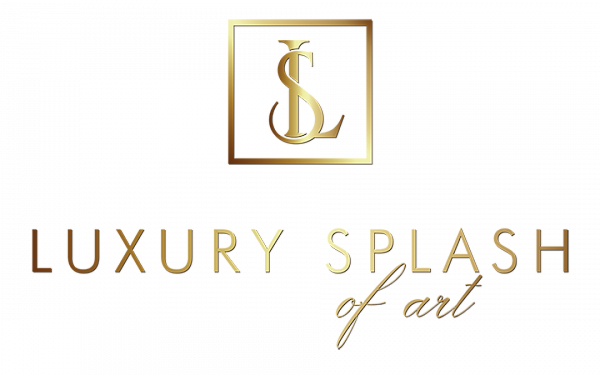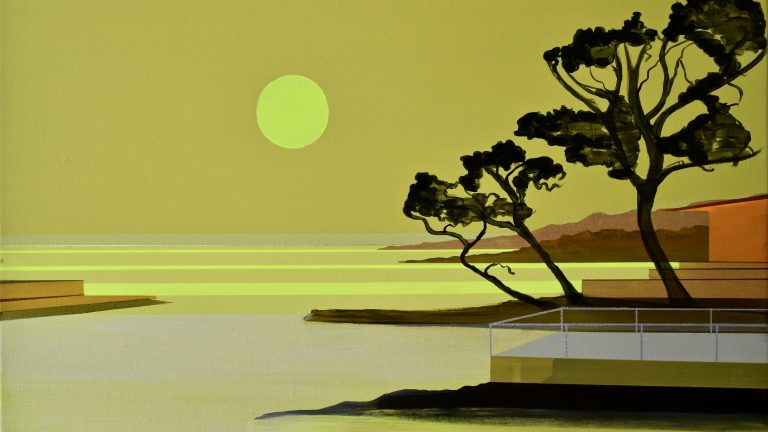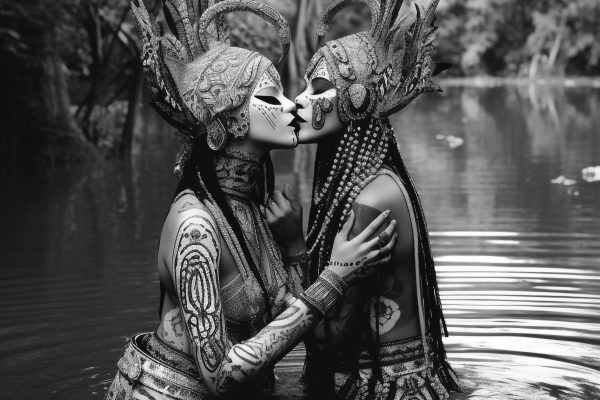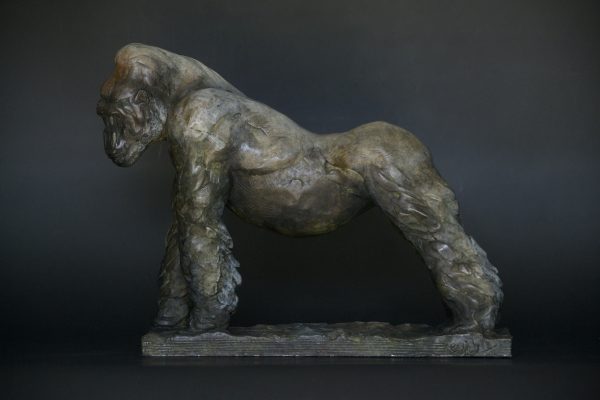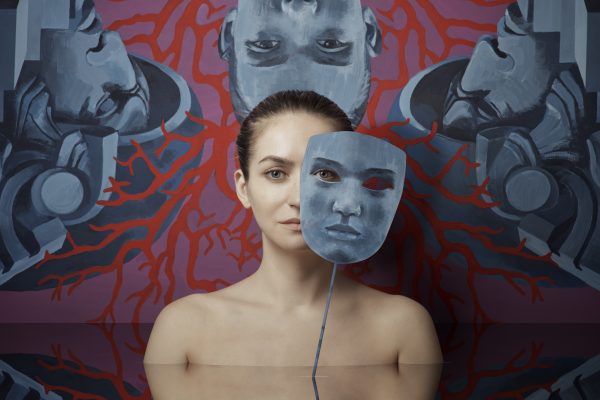A rebellious outsider, the illusionist decries the obtrusiveness and chaos of contemporary life, saying “It’s an avalanche of humbug impressions” from TV and the Internet. Such a globalized realm, she believes, creates a lack of suspense, an overwhelming sense of alienation, and claustrophobia–a world of deadening homogeneity.In such an airless, dystopian time and space, how does this Corsican-born, Amsterdam-schooled artist breathe, discover inspiration? Cecile van Hanja revels in Mondrian, Vermeer, Bauhaus, and fabled Modernist architect Mies van der Rohe. The colorist-cum-geometrician, she finds relief painting empty interiors, and exhilaration in abstract lines, shapes, and large windows. Geometry is, in fact, van Hanja’s lifeline, giving her work a surreal quality, luminosity and liberation.

A self-described “exile” in Holland, and in the world of IKEA furniture, van Hanja is drawn to the geometry of glass, hoping to invest it with transformative powers. Whether it’s her Luministic Modernism tribute to van der Rohe, the Glass House (architect Philip Glass), or IndoorSpace, she feels there is an inherent loneliness and “desperation” in glass-framed airports and pavilions–a sense of anomie–that she is determined to turn into uplifting illumination. “Painting is illusions, I like creating suspense like Mark Rothko, for I don’t have to provide answers, or meanings, emotions are far more important,” insists van Hanja, standing next to a table lined with neon and pastel oil paints, her favorite medium, in her Haarlem (Netherlands) studio.
Feeling free in this light-infused, old school building space–a welcome counterpoise to her sense of being “entrapped” by Covid-era restrictions–van Hanja dotes on trompe l’oeil, and the highlighting of empty spaces in paintings of iconic buildings. Those anonymous rooms and offices are her bête noire, signaling a loss of individuality in our society–and also the geometry impelling her to reimagine modern architecture. All of her evocative lines and shapes can be viewed as a reassessment, a navigation that transports her back to Vermeer’s calm interiors, and to Bauhaus. As she eagerly explains, “I enjoy the nostalgia of that period, the elegance, refinement, and craftsmanship. My work, three dimensions on flat surfaces, is also what they did during the Renaissance…illusions. So I am always in a fight with my environment.”
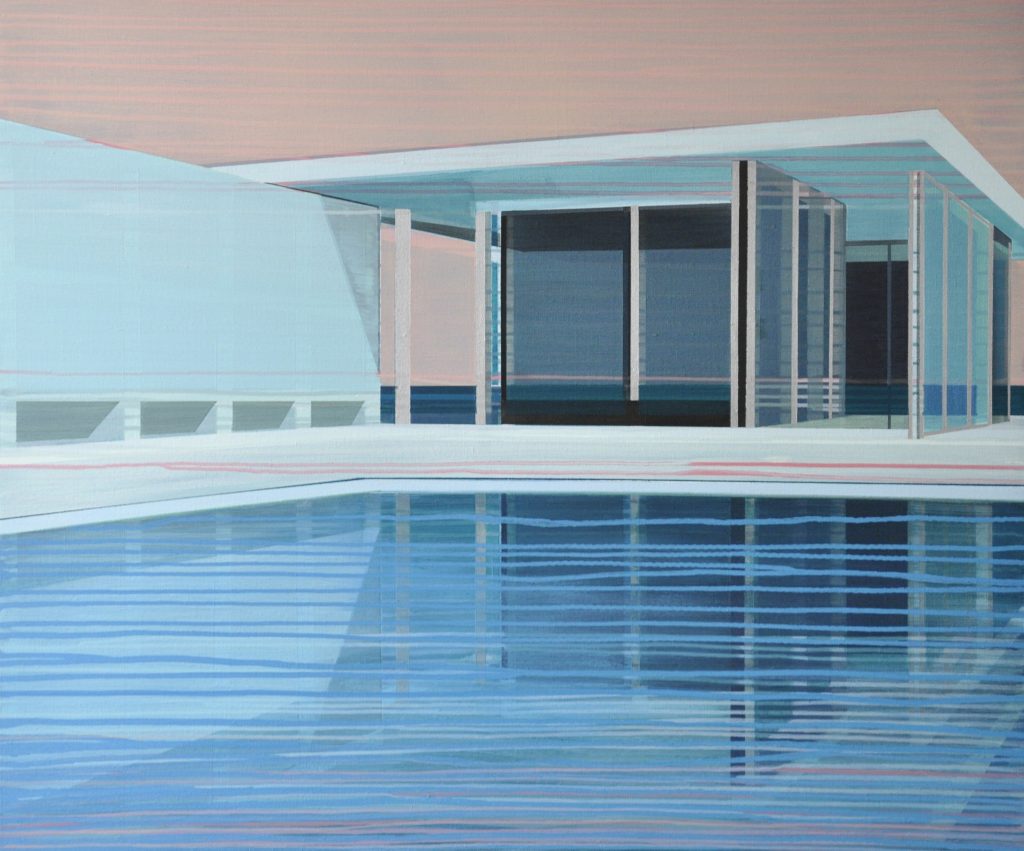
That struggle frequently discourages her. It’s problematic to grow up in sun-kissed southern France, the daughter of a celebrated chef, then being the “hybrid” forced to adjust to the vastly-different rhythms of living in Calvinist-influence Holland. Surrounded by the anonymity and “the possible threat, the feeling behind every door of empty rooms” in office buildings, she can easily feel alone, estranged, even if married to fellow artist, Jeroen van der Beek. collaborated on an intriguing project, “an adjustment on the perspective,” at the Pavilion Port Tonic Art Center near St.Tropez in Les Issambres.Essentially creating a trompe l’oeil, 3D swimming pool on a large platform, they conceived “a labyrinth of lines” that sowed the confusion of what is real and what is not. A visual delight on the Côte d’Azur, it was her again playing “tricks” on the viewer, and a homage to David Hockney. “I like his work very much,” says van Hanja, who met this titular figure while teaching at Amsterdam’s Van Gogh Museum (she occasionally gives Masters’ classes at the University of Amsterdam, classes in the restoration of modern art).
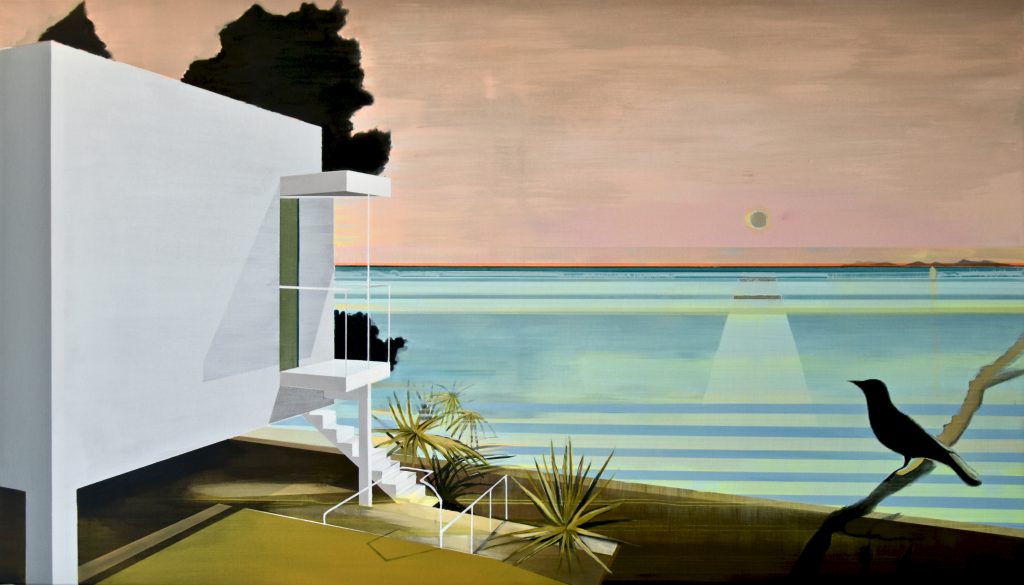
“I didn’t get to interview Hockney, but I enjoy his pop art, his joyful swimming pools. I really enjoy the way he uses light. Hockney’s color palette in Luminous Bay was inspired by the yellow in van Gogh’s Sunflowers. He’s not the traditionalist and neither am I.” Similar to Hockney, and van Gogh (a portrait of him looms on a wall in her studio), she too invigorates open-plan spaces with infusions of color. They are her statement against mass culture’s dullness, its melancholy–”architectural” flourishes meant to restore calm amidst the careening banality. She still has fearful moments, especially now that one of her prime gallery spaces has closed due to the Pandemic. A return to Corsica, to greater sunlight and inspiration, is also vexing. Such an enhancing visit is confined to the distant future. She must remain the outsider in locked-down Haarlem, the constant self-described “observer” never featuring people in her paintings. Yet still stirred by that photo of Van Gogh, van Hanja still finds luminosity, the gift of color. That allows her to cavort amid glass, to cast reflections–images emphatically revealing she’s the hopeful Utopian.
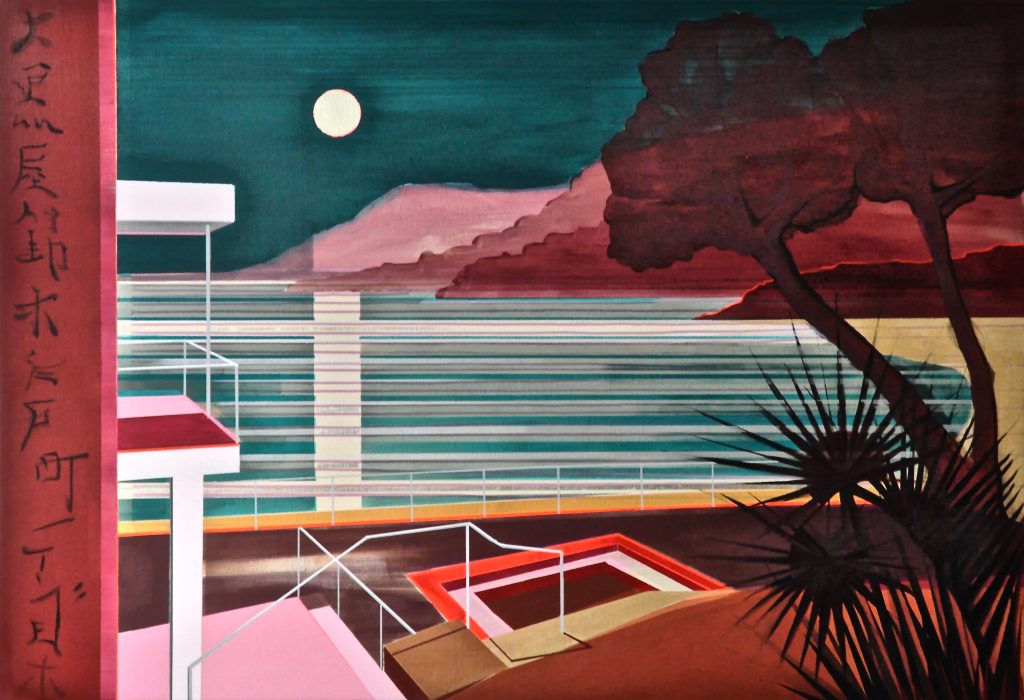
LSA joined van Hanja in her studio, and further probed her worldview, the influences that give her work a refreshing uniqueness.
LSA: In your German Pavilion painting there is a stark feeling of loneliness, emptiness. It’s like you are entering a different dimension.
CVH: I enjoy silence, the emptiness. To me it’s the opposite of claustrophobia. It gives me energy to paint, creative electricity, feelings of freedom. It allows me to be in contact with myself. My paintings are a metaphor for my soul, like I am painting a house for my soul. I adore aloneness.
LSA: So your studio must be a constant sanctuary?
CVH: Certainly! When I’m in my studio it is a time to reflect. Here there is no pain. Like my going to a small church. I listen to Bach, and I feel release. I can look at van Gogh’s picture, and am transported to a different dimension.
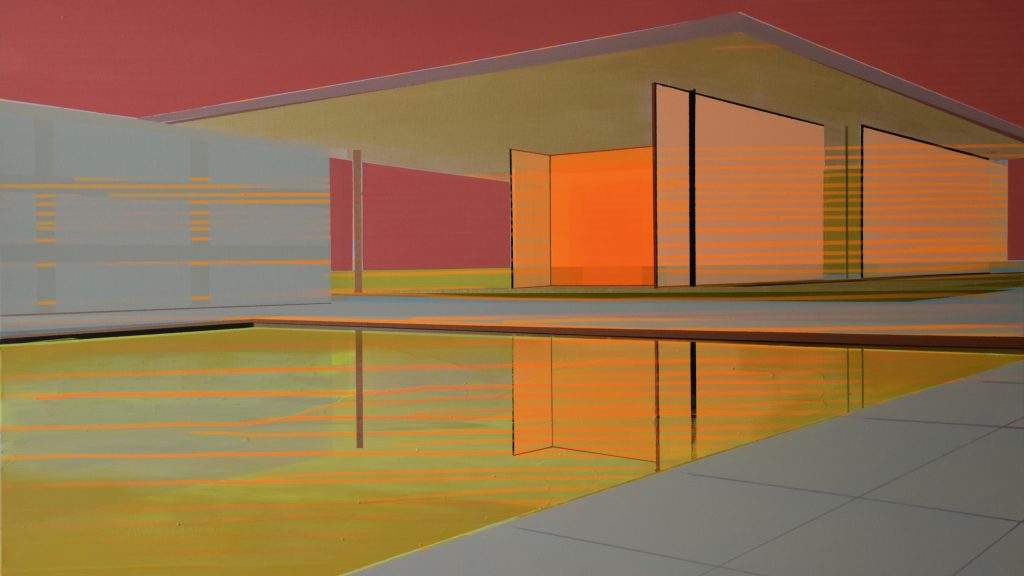
LSA: Mies van der Rohe seems to spur the same passion.
CVH: His clean lines…he is the only great architect in contemporary life. ‘Less is more,’ that is so true. I love simplicity. No frills, no extras, like Rothko who is just squares, touching each other…van der Rohe’s architecture is also floating in space.
LSA: Who influenced your use of colors? Are they the product of your attending the prestigious Gerrit Academie in Amsterdam?
CVH: I’m a hybrid, raised in France, surrounded by yellows, bougainvillea, later schooled in Holland, when I finished, I used Matisse and Mondrian’s colors. My father, a celebrated chef (Gaston van Hanja), also greatly influenced me. He worked in Monaco, Morocco, and living with him was like living in a film, a fantasyland. He taught me all about color…But Holland was initially awful ten years ago, then I started selling paintings. I felt greatly appreciated…the same feeling I experienced when I was selected from among 600 artists to be Artist in Residence at Chateau La Napoule (France). I realized then I had talent, that I could follow my dream.
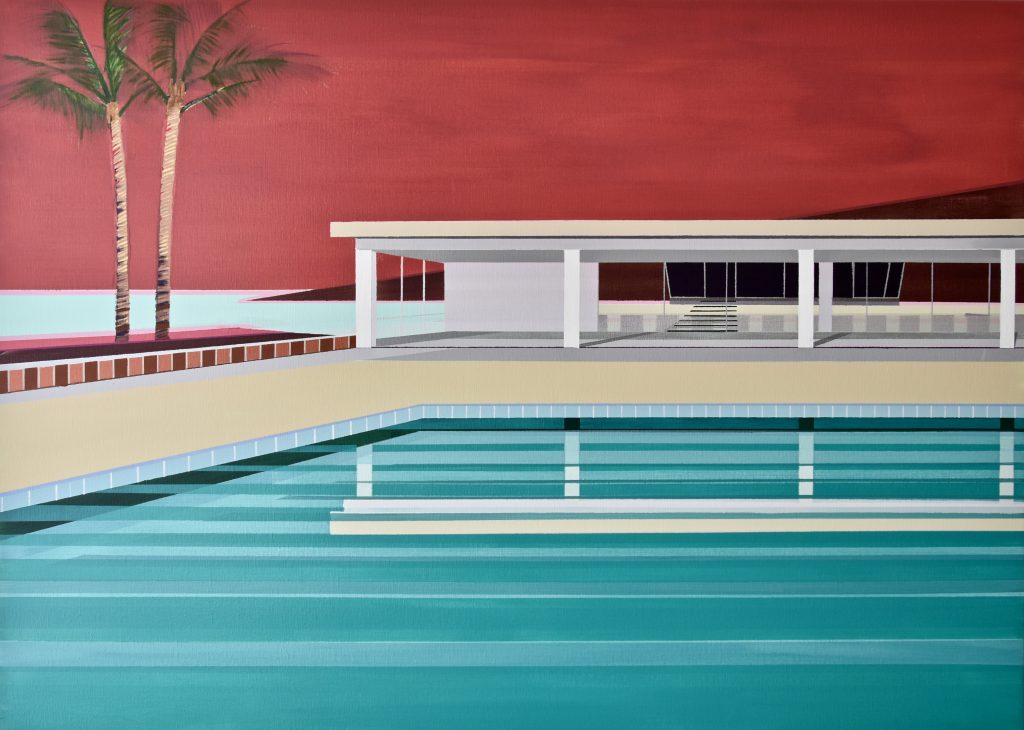
LSA: What’s the dream now?
CVH: To just continue to be the figurative painter…As I am working I have no great plan. When I do a layer, I reflect, and am surprised. I don’t know where I am going. It’s like a mystery novel. That’s why I like my Glass House. It has an aura of mystery. I hate paintings with too much of a story.
LSA: What other works have influenced you?
CVH: I certainly have a fascination with Claude Monet, his colors and water. I enjoy reflections of bridges on water. And I do like Japanese prints, their idea of Zen. There’s so little clutter in Japanese houses (her Moonlight Bay is inspired by Japanese prints and the landscape refers to Roquebrune Cap Matin on the Cote d’Azur). They are so open, so inviting.The walls in them can be moved, there are no closed spaces. I thrive on openness.
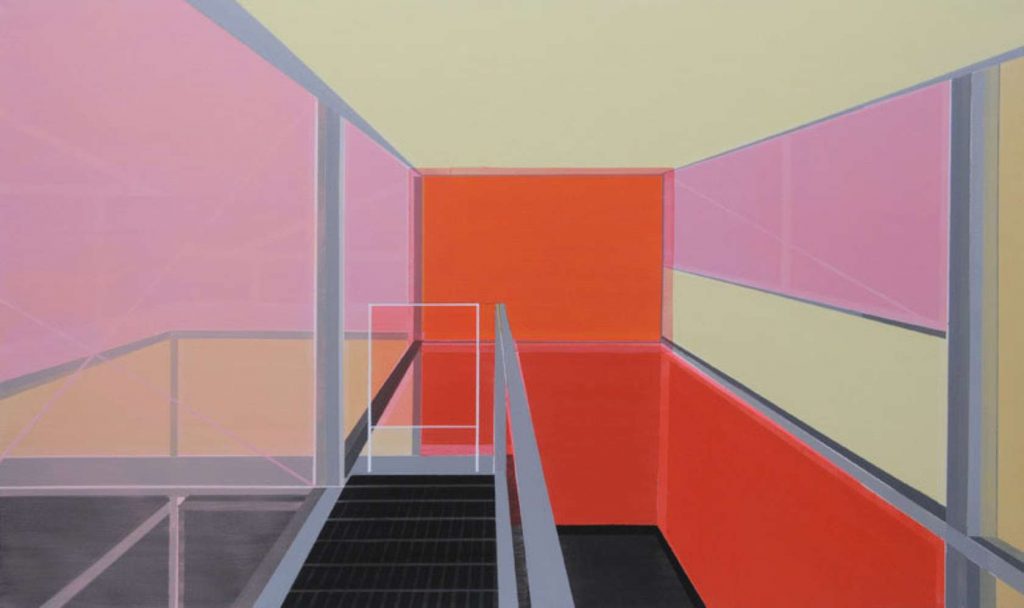
LSA: Limitations, less clutter, attributes of Bauhaus, that’s a real palpable presence in your work
CVH: Of course. Bauhaus sought simplicity , simple nice lines in fabrics, pottery…You can have one piece of furniture in a room, and it reflects a lot of beauty. Their empty rooms are very interesting…Their minimalism was really a utopian vision, they wanted to make life better. They gave me a legacy, like van der Rohe.
LSA: Your exuberant, bright Summer Time painting with a swimming pool seems indebted to Corsica’s sunlight.
CVH: It’s inspired by Hockney. Pools of color. It’s a tribute to him, referring to his quote ‘Love life,’ and to the painting from Henri Matisse, ‘luxe,calme et volupte’ (luxury, calm and pleasure). It is art as a joyful feeling, a feeling that gives every day meaning.
LSA: Summer Time is so luminous, so optimistic, I thought it was a homage to Corsica.
CVH: I do want to return there. I miss the Mediterranean, the sunsets, the sea. It’s nature, creativity, passion. A place I feel exuberantly free.
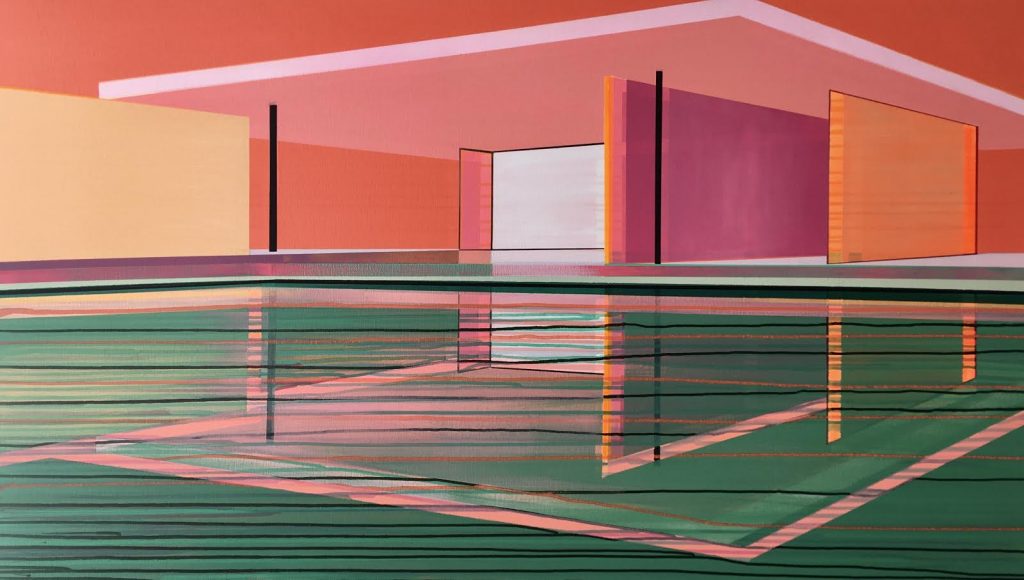
www.saatchiart.com/Cecilevanhanja
